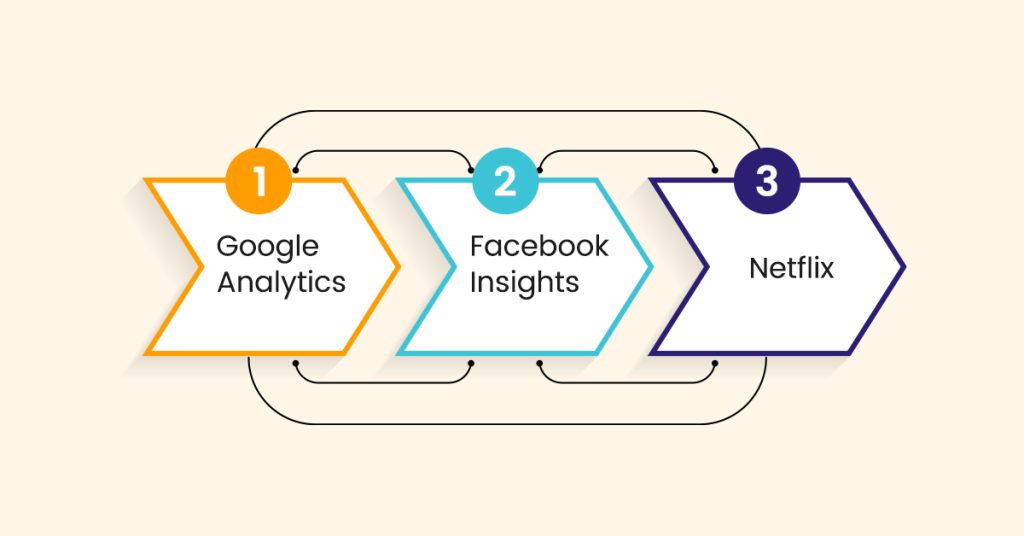
The Media has always been a major part of our lives. The media industry is a multibillion-dollar business that is constantly evolving. From newspapers to television shows to social media and streaming services, media has always been consumed by people in different ways.
The internet has changed the way we consume media. We spend more time online than ever before, and it is not just because we love to binge-watch Netflix but also because there are so many platforms available for us to choose from.
When consuming content but still needing more time, consumers have more options than ever. This creates a challenge for marketers who want their content to be consumed by their target audience.
Here’s where analytics comes into play: it helps you understand your customers’ preferences so that you can create better content! In this blog, we will dive into why analytics is essential for the media industry and the future of Analytics in media consumption.
What Is Data Analytics?
Data analytics is the process of examining data and drawing conclusions from it. The goal is to use it to improve business decision-making so that you can increase sales, reduce costs, and make your customers happier.
The term “data analytics” may sound like something only big companies need to worry about, but everyone uses it daily – even if they do not realize it. For example, when you search for something on Google or Facebook, they use data analytics to show you ads based on what they think will appeal most to you at that moment. Or if you are using an app on your phone with a GPS feature (like Uber), then your location data is being collected and analyzed by someone else’s software application to provide their service to you.
The Role of Analytics in the Entertainment Industry
The role of data analytics in the media and entertainment industry is growing, changing how we watch movies and TV shows. It helps create content that people want. This can be done by analyzing data trends, customer feedback, market research, etc. The goal is to provide a high-quality product that customers will enjoy while ensuring they save money on it. Without analytics, you risk creating something that doesn’t sell or doesn’t have enough appeal to make a profit.
Analytics helps in measuring the effectiveness of marketing efforts. It helps identify how much exposure a product or service has received, how many people have visited the website or downloaded an app, how many people are getting involved with social media activities, etc. These metrics help companies decide which advertising channels work best for them and what can be done to improve them.

Analytics Techniques for Media Consumption
The following are some of the analytics techniques for media consumption:
1. Site-level Analytics
Site-level analytics provide insights into how your visitors are interacting with your site. These tools can be invaluable in helping you understand what’s working (and what isn’t) on your site so that you can make changes as needed. Google Analytics is the most common example, but many other free or paid options exist.
2. User-level Analytics
User-level analytics is a powerful tool for understanding your audience and how they interact with your content. It gives you insight into how often and where your users are consuming media, which can be used to create personalized experiences for them.
With this information, you can identify what type of content works best for a specific audience segment or how to improve an underperforming piece of content. You can also use this data to segment users based on their habits and preferences, allowing you to create tailored content that appeals to each group.
3. Cohort Analysis
Cohort analysis is a powerful way to analyze the performance of your media campaigns. It takes a group of users exposed to your ad and compares their behavior to a control group of users who weren’t exposed. The results show how well your ads perform, which can help you optimize future campaigns.
Case Studies: Successful Applications of Analytics in Media Consumption

The following case studies show some of the ways in which companies are applying analytics to media consumption:
Case Study 1: Google Analytics
Google Analytics is a free service provided by Google that allows website owners to track web traffic. It provides data about website traffic, including visitor demographics, how visitors got to the site, and how they moved around it.
This information can be used to improve user experience on the website. For example, suppose it is found that users are leaving a particular page quickly without viewing other pages on the site. In that case, you can use this information to improve navigation to keep visitors looking at more pages.
Case Study 2: Facebook Insights
Facebook Insights is a free service provided by Facebook that allows businesses to track their own Facebook pages. It provides data about likes, shares, comments, and more for each post published on a Facebook page.
This information can be used to improve content marketing strategies by determining which types of posts get the most engagement from users and then creating more similar content in future posts.
Case Study 3: Netflix
Netflix is one of the most popular subscription services in the world and one of the largest online media companies. They have several shows they produce themselves and license from other companies.
Their analytics team has used user data to make more accurate predictions about what people will enjoy watching and how much they will enjoy it. This has resulted in a better experience for their subscribers, who spend more time on the site than ever.
Challenges of Analytics in Media
There are several challenges in media analytics, including the following:
Accuracy Issues in Reporting
Inaccurate reporting is the biggest challenge that media companies face. This can happen when they use third-party providers to collect their data. Third-party providers often have their methods for gathering data and may be unable to get all the necessary details from a website or app.
They might also be unable to track users on mobile devices if no cookies are stored on them. This makes it hard for media companies to get accurate reports on what people are doing on their sites and apps.
Data Quality
Another big challenge is the data quality that media companies have collected over time. There are no standards for the format or structure of their data. So, it is difficult for third parties to use this information efficiently. There is also no common way to verify this data and ensure its accuracy.
Standardization of Data
The first challenge is the standardization of data. There are many different ways to measure media and many different ways to measure audience response. This makes it difficult for companies to compare their results with those from other companies and the whole market.
Silos Within the Organization
One of the biggest challenges media faces in analytics is getting a handle on data. In most companies, there are silos within the organization; each silo has its own goals, KPIs, and objectives. These silos rarely work together and often do not share data. This can make it challenging to ensure that all departments work towards a common goal, which is essential for analytics implementation.
The Future of Analytics in Media Consumption
In the future, data analytics in media industry will play an even more essential role in media consumption. Here is how it might look:
The media platform will use advanced analytics to understand preferences and habits. They can suggest content that is tailored to the individual taste. For example, if you enjoy watching action movies, the platform recommends similar movies or TV shows you like.
Analytics will help the content creator understand their audience in a better way.
By analyzing viewers’ preferences, engagement, and feedback data, creators can decide better what to produce. This will lead to more relevant and engaging content.
Analytics will provide media companies with instant feedback on how their content is performing. They can track metrics such as viewer ratings, social media mentions, and engagement levels in real-time. This will allow them to adjust quickly and deliver better content to their audience.
Thus, by partnering with data analytics service providers, media companies can harness the power of analytics to gain a competitive edge in the industry and deliver exceptional content experiences to their audience.
Conclusion
The bottom line is that we can all be more effective media consumers by taking a closer look at the media that we consume. We may not all be able to measure it with scientific precision, but if you can keep track of your hunches and check out the numbers, there’s no telling what insights you might discover. And if you find that numbers don’t tell the whole story? The best thing to do is test your hunches with more data.

